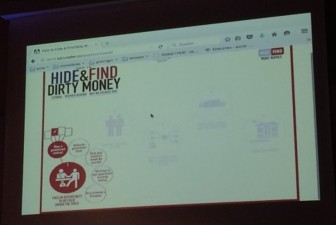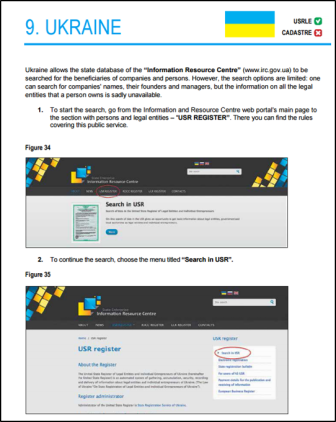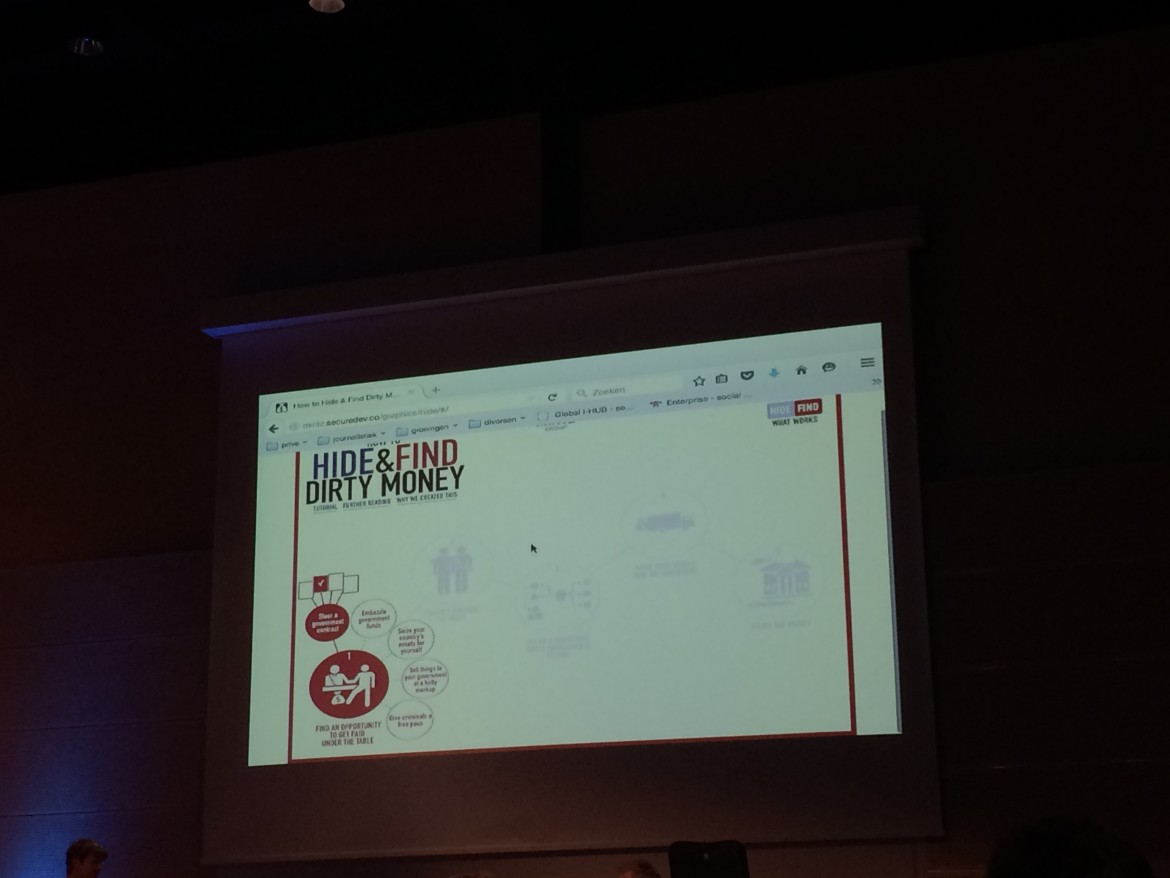 “The skill of digging into complex wrongdoing is required for both my day job and my evening job,” said Jim Mintz, founder of the Mintz Group, of his days as a private investigator and his nights teaching investigative reporting at Columbia University.
“The skill of digging into complex wrongdoing is required for both my day job and my evening job,” said Jim Mintz, founder of the Mintz Group, of his days as a private investigator and his nights teaching investigative reporting at Columbia University.
Investigators in all sectors have traditional methods and techniques for digging up information to track and document wrongdoing. This was the topic at How Other Investigators Do It, a well-attended panel at the Global Investigative Journalism Conference. Moderator Margo Smit led a discussion around commonalities between industries and techniques transferable to journalism.
Mintz: Think Like a Crook
In his interactive guide Hide & Find Dirty Money, Mintz shared five ways to “think like a public official with a payoff coming his way” — an exercise he has successfully used to identify important clues, people and places on the path of uncovering dirty money:
- Find a way to get paid under the table like steering a government contract, embezzling government funds, seizing your country’s assets yourself, or giving criminals a free pass.
- Identify someone to trust, like a family member, friend or lawyer, because you probably won’t hide the money yourself
- Set up a structure that is untraceable like an offshore bank account and fictional account holders.
- Move your money into the structure.
- Enjoy the money by shopping, buying luxurious vehicles and living like a king.
Mintz tells his students they can learn a thing or two from investigators in other sectors—like accounting firms or law enforcement agencies—where investigative techniques are being employed.
Davidson: Use Human Sources
“We want the same goal,” said former FBI agent Joe Davidson, who spoke about the similarities between investigative journalists and officers of the law. “We’re just trying to put the bad guys in jail and we want the truth to come out.”
Law enforcement officials and journalists, he said, will initially view each other as adversaries, but a good relationship between the two could prove fruitful for both.
For journalists looking to approach a law enforcement agent, Davidson suggests you should:
- Be honest both about your intentions and in your reporting process.
- Every FBI office has a media representative to help you get access to the right person. If you call them and describe the particular case you want to discuss, at the very least you may score a meeting with the supervisor.
- When you meet with the supervisor or case agent, sell yourself. You have only one chance to sell yourself as professional, smart, and non-sensational journalist. If you can, share a little information about the case with the law enforcement agent; It could go a long way.
Even with the ability to wiretap or pay for information, luxuries that journalists do not have, Davidson said 95% of his cases were a result of a “real body source.”
“Genuine secrets, even in the age of big data, are still in the heads of fellow human beings,” Davidson remarked. “And we have to be really, really good at getting them to give up those secrets.”
Koch: Find the Assets
Anne Koch from Transparency International spoke about how TI’s work dovetails with investigative journalism – and also how it’s different. Corruption by its nature is secretive and the role of investigative journalism is essential and makes serious and measurable impact in the fight against corruption. At the same time NGOs like TI want to bring about policy and political change which sets them apart from a lot of investigative journalism whose main role is to report and to expose.
 Koch cited investigative work by three of TI’s “chapters,” the national organizations in the global TI network – from Russia, France and the Czech Republic — and shared links to practical tips and techniques that either emerged from investigations or were used by investigators.
Koch cited investigative work by three of TI’s “chapters,” the national organizations in the global TI network – from Russia, France and the Czech Republic — and shared links to practical tips and techniques that either emerged from investigations or were used by investigators.
TI Russia (in Kaliningrad) recently released Exposing the Corrupt: Tools To Get You Started. This guide is designed to help find the ultimate beneficiaries of companies and real estate in eight European countries (France, Germany, Greece, Lithuania, Spain, Switzerland, UK, and Ukraine). It is of help in carrying out investigations into certain types of corruption, such as conflicts of interest, undeclared assets, and illicit enrichment. Koch cited the Kaliningrad group’s work revealing conflict of interest by the Governor of Kalingrad in a procurement deal.
She also spoke of the work TI France did on the so called “biens mal acquis” case – a criminal inquiry into the “ill-gotten gains” of three African heads of state – from Congo Brazaville, Gabon, and Equatorial Guinea, which has generated widely shared photos of luxury sports cars worth US$5 million seized by French police off the Champs-Elysees in Paris. TI France has produced a short document, “How Civil Society Can Act to Obtain the Recovery of Misappropriated Assets.”
Koch also described Bisnode, commercial software that’s been instrumental to TI Czech Republic investigations. This allows investigators to trace the connections between companies and individuals. It was useful when the Czech team looked at corruption in the Prague Transit Authority and identified offshore companies in a network set up by a criminal ring.
Abby Ellis reports on this event as part of the IACC Young Journalists Initiative, a network reporting on corruption around the globe.

